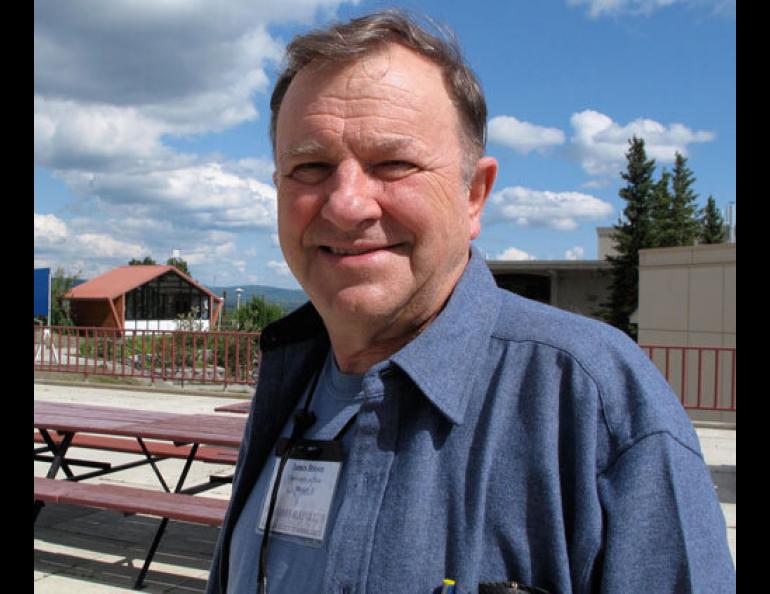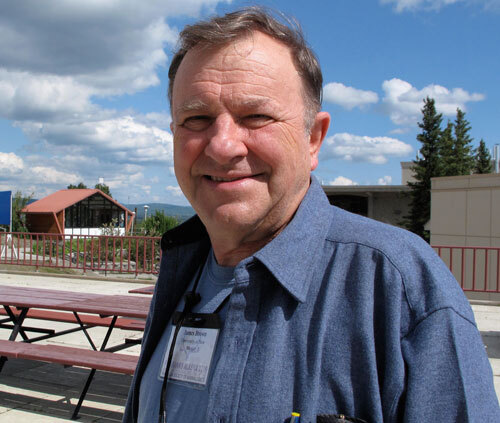
Of voles, bats, caribou, and the mammal with the big brain
A few notes from American Society of Mammologists 2009 Annual Meeting, held at the University of Alaska Fairbanks:
***
Unlike bears and ground squirrels, which somehow don’t lose any bone mass during their months of hibernation, redbacked voles are more like humans, in that their bones become more brittle during periods of inactivity. Voles lose bone density in winter, when they scurry around much less than they do in summer. Ian van Tets, a biologist with the University of Alaska Anchorage, studies redbacked voles and thinks scientists could learn a lot about bone-mass loss from voles. People lose bone-mineral density when they don’t put stress on their bones, and weakened bones would be one of the hurdles to address for humans traveling in outer space. For instance, a trip to Mars could take as long as three years.
“We have a model organism that in a short period of time experiences effects that would happen on a flight to Mars,” van Tets said.
He thinks researchers could use voles, which are easy animals to raise and keep in the lab, as test subjects for drugs that slow the rate of bone loss.
***
Little brown bats, the only bats living in the Interior and Southcentral Alaska, have longer ears and feed a bit differently than the same species found farther south, said Tom Jung, a Yukon government biologist from Whitehorse.
Little brown bats range throughout North America all the way down to Mexico. Jung and his colleagues have banded thousands of bats during the last several years, and he has noticed that northern bats seem to have evolved longer ears. This adaptation may help them use echolocation calls in a more precise way than their brethren down south. Jung thinks their unique ears and calls help them pick spiders and other insects off vegetation, possibly an adaptation used both early and late in the season, when there aren’t as many insects flying.
“Here’s a species everybody thought they knew, definitely the most studied bat in North America, and they are totally different on the edge of their range,” Jung said.
***
About a decade ago, Steven Hare of the International Halibut Commission and Nathan Mantua of the University of Washington noticed that when salmon fishing was great in Alaska, it wasn’t so good in Washington, and vice versa. They came up with the term “Pacific Decadal Oscillation” to describe weather patterns that last a few decades and may affect the fish. Kyle Joly with the Gates of the Arctic National Park thinks caribou may also wax and wane with weather patterns.
Joly and several colleagues looked at records of the population changes of great northern caribou herds and found that the Western Arctic and Teshekpuk herds seemed to be associated with the same Pacific Decadal Oscillation as the salmon. The Western Arctic herd, for example increased in size since 1976, when the oscillation went into a “positive phase,” which meant warmer weather might have improved the summer quality of the vegetation they eat. The Central Arctic and Porcupine herds of caribou seem more in tune with another weather pattern called the Arctic Oscillation. The herds appear to decline during the phase of the oscillation that brings heavy snows, which makes feeding more difficult and may make them more vulnerable to predators.
***
One of the mammals discussed at the conference was the human being. James Brown of the University of New Mexico is a desert ecologist who studies the relationships between energy and the body size of animals. He looked at the current global economic crisis with the hypothesis “that Homo sapiens have exceeded the carrying capacity of the earth and will never return to the level of social and economic development experienced from 1997-2007.”
Energy powers the economy, Brown said, and most energy comes from fossil fuels, which are rapidly depleting. He wondered if it was possible to keep the economy growing when that action will take enormous amounts of fossil fuel. And, as population increases, there’s also more pressure on the system.
“All organisms have a tendency for exponential expansion if the environment allows it,” he said. “Humans have been able to do that for thousands of years, and the assumption is that it’s always going to be constant.”
Asked what has happened to other creatures when they’ve reached the carrying capacity of their environment, Brown said, “They tend to crash.”
Brown said there are three ways for humans to avoid a crash. First, everyone should use less energy per capita. We use about five times the world’s average, per person, in the United States. Second, the world’s population should be lowered, and, finally, we need technological advances to bail us out.
“If you listen to some economists it’s almost an economic law that technology will save us again,” Brown said. “But, at some point, something will become limiting. Individual civilizations have collapsed over and over.”





